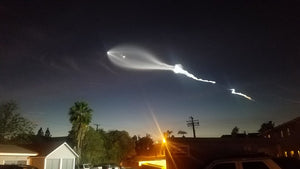February- A Planet Parade, The Clown Face Nebula and a Heart-Shaped Cluster
Planetary Parade
This February, skywatchers will have the opportunity to see at least six planets in the night sky each evening. Jupiter and Venus will be the brightest, while Mars and Saturn will appear as fainter dots. Uranus and Neptune will also be visible, but spotting them requires a telescope. By late February, Mercury will emerge near the western horizon, making it technically possible to see all eight planets in one night—including Earth! However, there’s a challenge: when Mercury becomes visible, Saturn and Neptune will be close to the horizon, making them difficult to observe.
The best time to view this event is shortly after sunset from a dark location with minimal light pollution. Venus, Jupiter, Mars, and Saturn can be seen with the naked eye, while Uranus may be visible through binoculars. A telescope with at least a 4-inch aperture is necessary to see Neptune, which will appear as a tiny blue dot. Using a star chart or an astronomy app can help locate the fainter planets.
This event is often called a "planetary alignment" or "planetary parade," but in reality, the planets aren’t forming a perfect line in space. Instead, they appear along the ecliptic, the path that the Sun and planets follow across the sky. What makes this event special is that so many planets will be visible above the horizon at the same time. To make the most of this rare celestial sight, find a location with an unobstructed view of the horizon, observe on a clear night, and use the right equipment for the dimmer planets. This is a unique chance to witness most of the Solar System in a single evening!
Note on Venus – February 19, 2025
On February 19, Venus will reach its closest point to Earth, shining at a magnitude of -4.5—its brightest appearance of the year. If you point a small telescope at Venus, you’ll also see it as a crescent, as it’s an inner planet. From January 11 to February 19, Venus will shrink in size each night, giving you a fascinating view of this changing phase.
The Clown Face Nebula-NGC 2392
Planetary nebulae are often elusive and hard to detect, but NGC 2392, also known as the Clown Face Nebula or Eskimo Nebula, stands out, especially in the winter months. Located in the constellation Gemini, just a few degrees from the star Wasat, this nebula is one of the more noticeable objects in its category. The name "Eskimo Nebula" comes from its appearance, which resembles a face surrounded by a fur-lined hood, further emphasizing its distinctive look.
Though binoculars may reveal a faint, fuzzy star, a small telescope will show it as a small, circular patch with a bluish tint. Its central star is easily visible, and with larger telescopes, you’ll be able to see a darker, more defined outer ring, giving it a more detailed and structured appearance. An interesting phenomenon occurs when you focus on the central star and look away—this makes the nebula vanish briefly and then reappear, adding a sense of mystery and dynamism to the object.
The Heart-Shaped Cluster - M50
Located in the constellation Monoceros, it is an excellent target for both beginners and experienced stargazers. To observe M50, binoculars can provide a good first look, revealing it as a faint, fuzzy patch of light. While you won’t see individual stars in binoculars, the cluster’s heart shape will be apparent. For a more detailed view, a small telescope (3-inch or larger) will start to resolve the stars, showing a loose grouping of them with a few brighter ones standing out. With larger telescopes, you can explore the cluster more deeply, as higher magnification will reveal many more stars and allow you to clearly see the distinct heart shape formed by the brighter stars in the center. M50 is best observed during winter and early spring in the Northern Hemisphere, particularly when Monoceros is high in the sky.







